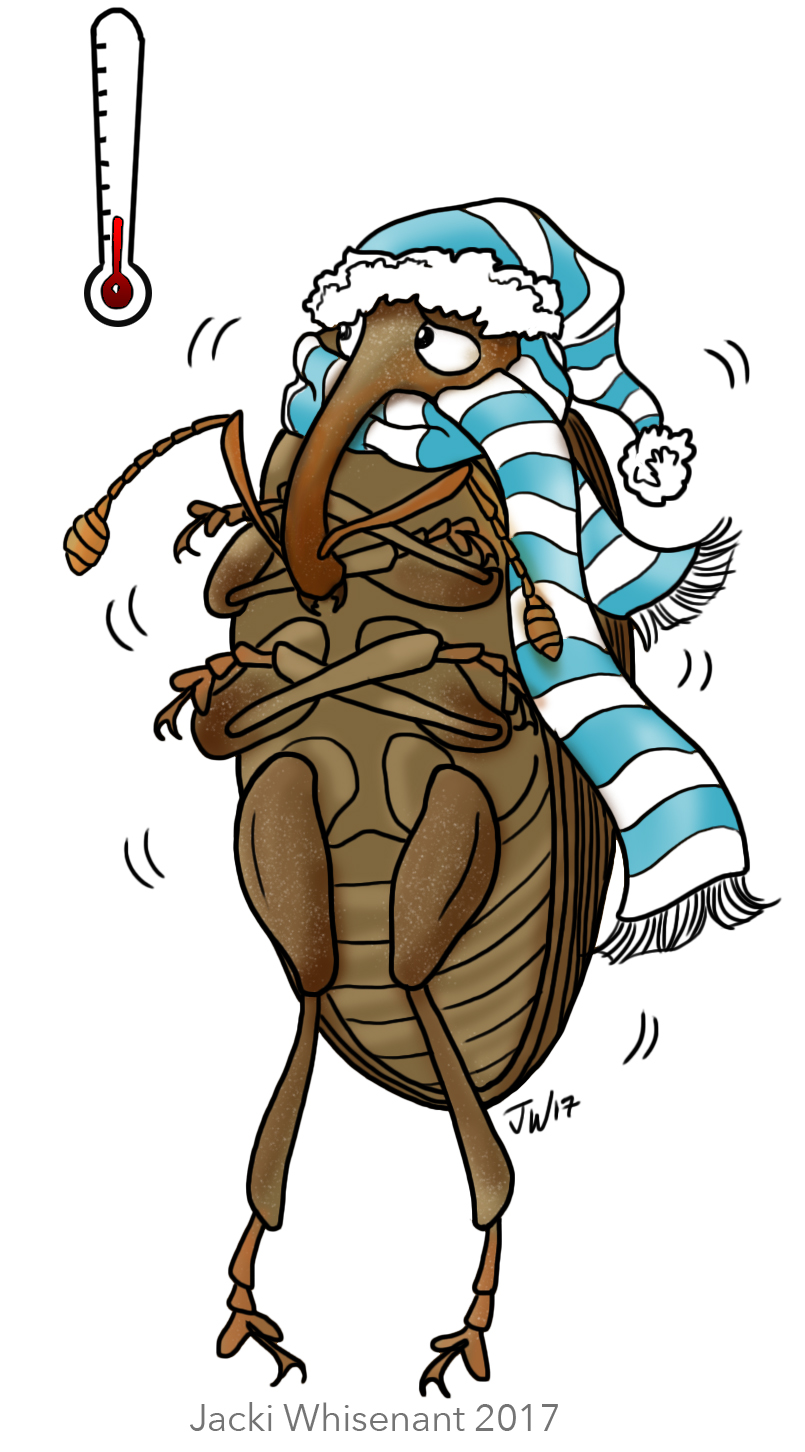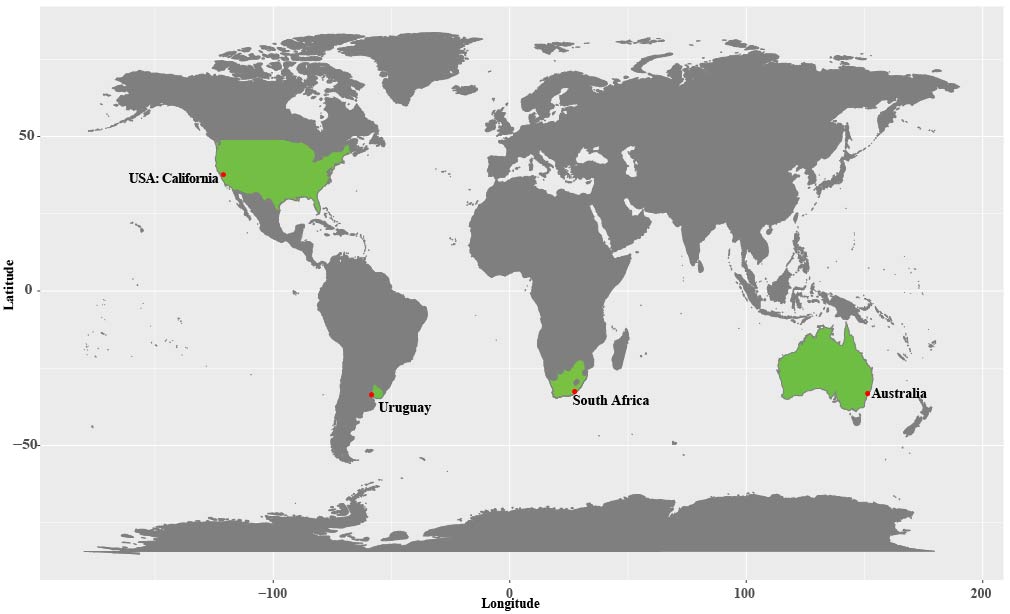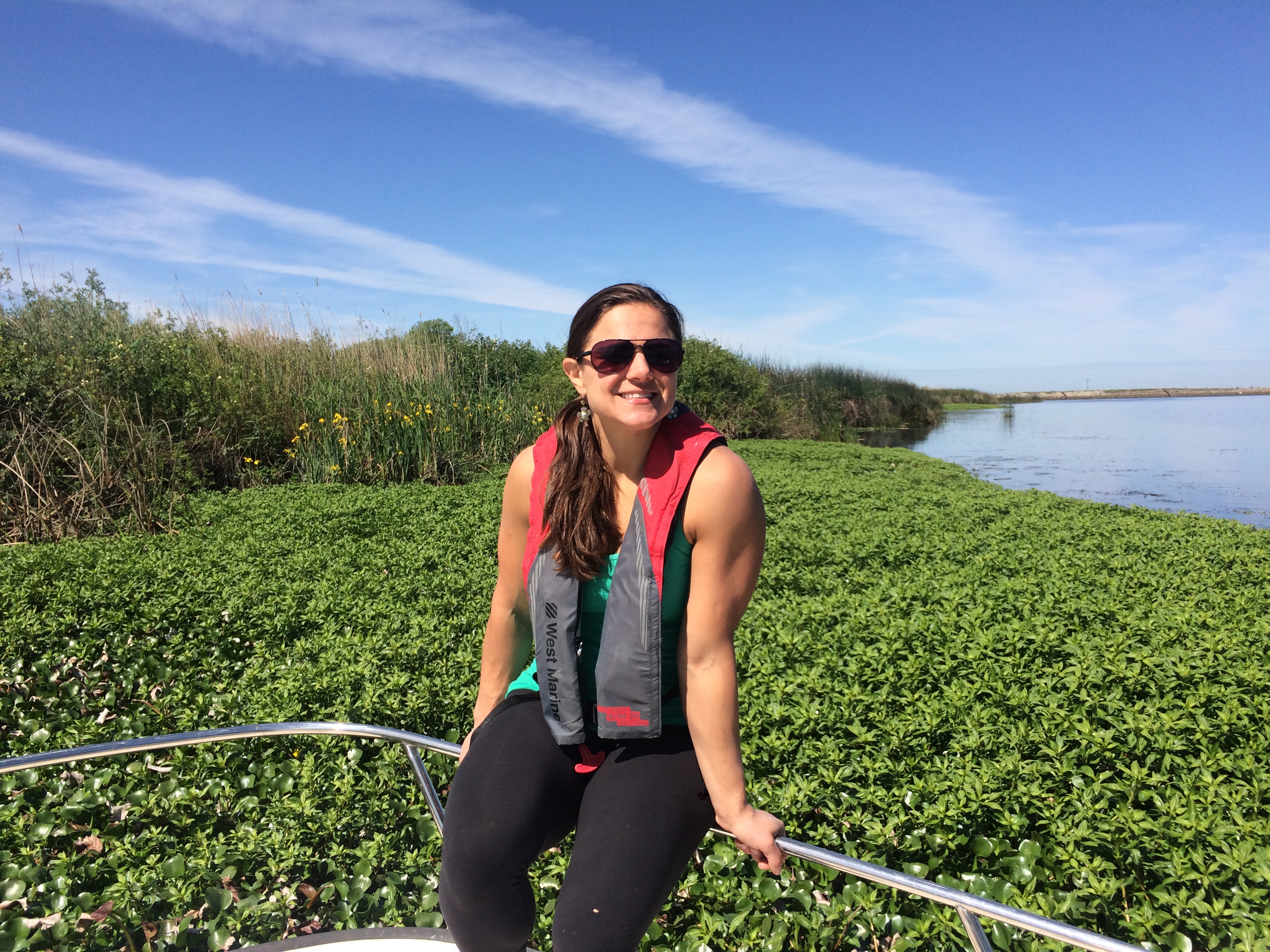Note: A version of this post previously appeared on Julie Hopper’s blog: Academia, Life and Science with an Adventurous Global Change Biologist
Over 30 years ago, water managers introduced small herbivorous insects called weevils as a way to control the invasive water hyacinth in the Sacramento-San Joaquin River Delta in northern California. In other regions where they have been released, these two weevil species can substantially decrease the biomass and cover of water hyacinth. However, they haven’t been as effective in California.
 We set out to find out why in a new study that I coauthored with Angelica Reddy (first author) and Paul Pratt at the USDA, and researchers from Argentina and Uruguay.
We set out to find out why in a new study that I coauthored with Angelica Reddy (first author) and Paul Pratt at the USDA, and researchers from Argentina and Uruguay.
This study was in conjunction with some of the work I did as a Delta Science Postdoctoral Fellow to investigate the mechanisms limiting the current biological control of invasive water hyacinth (Eichhornia crassipes) in the delta.
Classical biological control uses natural enemies (predators/herbivores, parasitoids, and parasites) to control invasive populations of weeds, pests, and disease vectors in the introduced range. Successful biological control agents can reduce pest populations below threshold levels that cause problems for humans and native species. Once established, biological control can provide a sustainable, long-lasting management option.
In a previous study, my coauthors and I conducted a one-year field survey 34 years after the initial releases of several biological control agents of water hyacinth in the Sacramento-San Joaquin River Delta. We found that two biological control agents, the weevils, N. bruchi and N. eichhorniae, were still present in the delta and the associated tributaries. Although N. bruchi was broadly distributed throughout the delta, N. eichhorniae was only found in the southernmost tributaries. Densities of N. bruchi during the warmer months in the delta were comparable to densities in other regions with successful control of water hyacinth, but were not high enough year-round to reduce water hyacinth biomass and cover. Thus one idea to improve control is to re-introduce the more rare weevil, N. eichhorniae, in order to increase its abundance and distribution in the delta and compliment the impacts of the existing weevil populations.
One theory for the difference in the current abundance and distribution between these two weevil species is that the present biotype of N. eichhorniae in the delta is less cold-tolerant than N. bruchi. My colleagues at the USDA and I were interested in determining whether a cold-temperature biotype of N. eichhorniae is present. If a cold-tolerant biotype exists, then the goal was to screen it in the quarantine (host range tests and pathogen screening), access the necessary permits, and then release it into the delta to improve the performance of the current population of N. eichhorniae and ultimately enhance the control of the invasive water hyacinth in the delta.
 To achieve these goals, we examined the cool temperature performance and cold tolerance of four populations of the biological control agent, N. eichhorniae. These populations consisted of N. eichhorniae from: the Sacramento-San Joaquin River Delta (USA), a population within the native range (Uruguay), and two temperate populations (Kubusi River, Stutterheim, South Africa and Jilliby, Australia). The locations of these populations are noted as red markers in the green-highlighted regions on the map.
To achieve these goals, we examined the cool temperature performance and cold tolerance of four populations of the biological control agent, N. eichhorniae. These populations consisted of N. eichhorniae from: the Sacramento-San Joaquin River Delta (USA), a population within the native range (Uruguay), and two temperate populations (Kubusi River, Stutterheim, South Africa and Jilliby, Australia). The locations of these populations are noted as red markers in the green-highlighted regions on the map.
We measured life history parameters—including egg and juvenile survival and development, and adult fecundity and longevity—of these weevil populations under temperatures occurring in the delta during the cooler seasons of fall and winter. I then used these parameters to calculate the intrinsic growth rates, doubling times, generation times and reproductive potential of each of these populations (using matrix models as I have detailed in a previous blog).
In summary, we found that the population from Jilliby, Australia had the highest intrinsic rate of increase under conditions simulating fall temperatures in the delta due to the fact this population had the highest fecundity compared to all of the other populations (including the existing population residing in the California delta). USDA is presently seeking permission to release the Australian population into the Sacramento-San Joaquin River Delta to improve the biological control of the invasive water hyacinth.
Please follow my blog: www.juliehopper.wordpress.com to stay updated on my work, including a study on the population genetics of both of these biological control agents (N. bruchi and N. eichhorniae), using these same populations pictured in the map and many others! I finally submitted this manuscript for review…stay tuned!
References
Hopper J.V., Pratt P.D., McCue K.F., Pitcairn M.J., Moran P.J., and Madsen J.D. 2017. Spatial and temporal variation of biological control agents associated with Eichhornia crassipes in the Sacramento-San Joaquin River Delta. Biological Control. 111, 13-22. https://doi.org/10.1016/j.biocontrol.2017.05.005
Reddy A.M. Pratt, P.D., Hopper J.V., Cibils X., Walsh G.C., Mc Kay, F. 2019. Variation in cool temperature performance among populations of Neochetina eichhorniae (Coleoptera: Curculionidae) and implications for the biological control of water hyacinth, Eichhornia crassipes, in a temperate climate. Biological Control 128, 85–93. Free access for 50 days: https://authors.elsevier.com/c/1XrU-3kk-aBWdj
Van Driesche, R., Hoddle, M., & Center, T. (2008). Control of pests and weeds by natural enemies: an introduction to biological control. Oxford, UK: Blackwell Publishing.




